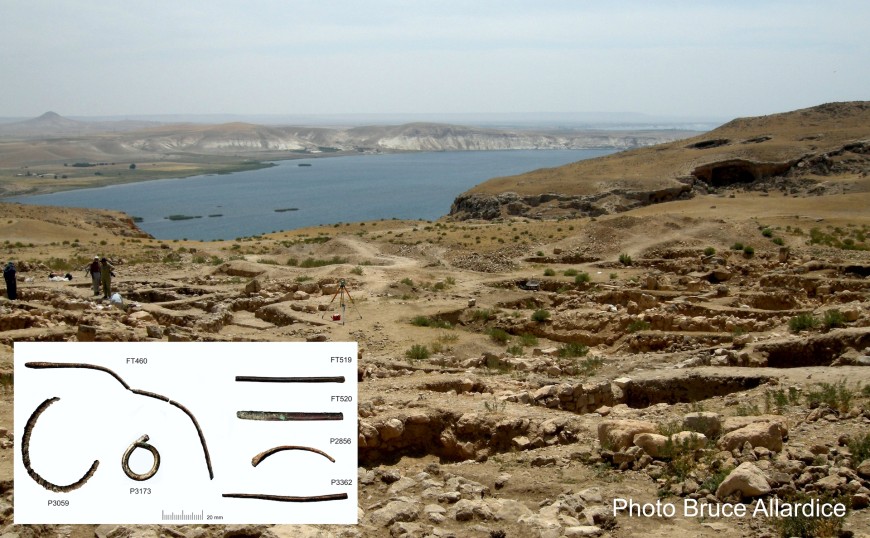Neue Publikation erschienen!
Fold, Twist, and Draw – Techniques of Copper Alloy Wire Production from Hellenistic Jebel Khalid – Matasha Mazis and Matthias Klein
2023/04/24 von Jane Kreiser

Wires form the basic components of many types of metal products – jewellery and ornaments, chains and fasteners, and fine tools. Although we may take it for granted in modern life, the humble wire was technologically challenging to make quickly and efficiently in antiquity, especially when the material was iron or copper alloy, both of which are more difficult to work into a wire shape than gold or silver. We recently completed scientific investigations of copper alloy wires from the site of Jebel Khalid in Syria, excavated 1986–2010 by an Australian team. The site was occupied throughout the 3rd century BCE (the Hellenistic period) and into the Roman period. Seven wire specimens were examined using X-ray fluorescence (XRF) (at RWTH Aachen), and optical light microscopy and scanning electron microscopy with energy dispersive X-ray spectroscopy (SEM-EDS) (at TU Kaiserslautern). Our results show that several techniques were employed to make the wires: forging, folding, strip twisting, and possibly ‘strip drawing’. We found evidence of extensive annealing, non-uniform, sub-round profiles, and uneven and faceted surfaces, which represent the challenges of working with the material. We found no evidence of solid wire drawing, which is a technology documented in the Medieval period and still in use today. The Jebel Khalid metalworkers used different copper alloys to make wire, some with high levels of lead (Pb). Subtle joins were observed in some samples, whereas others had obvious folds and directional structures. The findings help to enhance our understanding of base-metal wire development in antiquity.
Mehr erfahren
Keywords: ancient wire technology – Syria – Hellenistic – Roman – copper alloys


